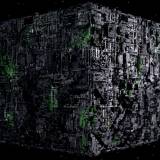All 3DO Games (Kinda) In Order: Intro/Launch Day
By borgmaster 2 Comments
I have been sent to Multimedia Hell for my sins against chronogaming, and the Multimedia Devil looks surprisingly like Trip Hawkins (I was expecting Tom Zito). Most of the wretched souls in Multimedia Hell have torments such as being stabbed with Encarta CDs or being forced to eternally watch whatever this is supposed be. In my case, the punishment is to play every 3DO game and guide you through its library of nonsense. But before we can begin, an important question must first be answered.
What is the 3DO?
In 1982, William M. Hawkins III left his job as Director of Strategy and Marketing at Apple in order to start a video game company. On May 27 of that year, Hawkins (known as Trip to his friends and detractors) founded Amazin' Software, which all of his initial employees thought was a stupid name. After a few months he was pressured into renaming it to Electronic Arts, a slightly less stupid name. The company spent most of the rest of the 1980's creating and publishing games for various home computers, especially the Amiga. In this way Electronic Arts (EA) steadily grew to a yearly sales revenue of $63.5 million in 1989, which was the year Hawkins took the company public. Also in 1989, EA began to develop games for consoles, namely the Sega Genesis, in the most hilariously strong-arm way possible. Doing this resulted in EA seeing a yearly revenue of over $100 million by 1991, and was well positioned for its meteoric success in the '90's.
In 1958, an engineer working for Western Electric, named David Paul Gregg, invented the idea for an optical data disk while futzing around with electron beams. Gregg patented the idea in 1963 and started his own company, the awesomely named Gauss Electrophysics, to further develop the concept. He eventually sold his patent to MCA in 1968, which spent several years developing the concept in conjunction with Phillips. The first commercial product using this patent was released on December 11, 1978, as the MCA Discovision. Even though Disco will never die, the product line was eventually renamed to the more descriptive LaserDisc in 1980. These were about the size of a vinyl album and stored media in an analog method, which can be thought of as working similarly to vinyl but with lasers and microscopic grooves. These were sold as a way to record and play higher-quality video than VHS with more dynamic user interaction. The LaserDisc never really caught on with the general public.

Starting in the late '70's, Sony and Phillips, MCA's old partner, worked on creating an optical disc format that could do for audio media what the LaserDisc was trying to do for visual media. By 1980, they succeeded not only in reaching that goal, but doing so with a compacted format that stored audio digitally. The proceeding years saw the partners alter their creation to digitally store any kind of data, not just audio. This resulted in the creation of the Compact Disc - Read Only Memory (CD-ROM) format in 1983. After extensive industry and ISO wrangling, the first commercial CD-ROMs went to market in 1986. These discs could store around half-a-gigabyte of data which could be accessed dynamically. This capacity was several orders of magnitude higher than the highest capacity contemporary floppy discs or ROM cartridges. The ability to store and access a mind-boggling large quantity of multiple types of media in a small, economical disc gave a lot of people a lot of ideas of variable quality.
One of those people was Trip Hawkins, who began toying around with the idea of a CD-based multimedia game console with some engineer friends in 1989. That idea came together in 1991, when Hawkins resigned as CEO of EA and started the 3DO Company, poaching talent from Commodore and Atari along the way. This was a kind of his last option, as he had previously attempted to shop his ideas around to Sony and Phillips, who were both too busy being screwed over by Nintendo to give him much of a hearing. '91 was also the year that Commodore and Phillips made their attempts at multimedia consoles with the CDTV and CD-I, respectively. Those products failed so spectacularly that it's amazing they didn't bring the whole concept down with them.

The established players were also busy with figuring out what to do with CD-ROMs, though they were constrained by their existing cartridge-based hardware. NEC put out a CD add-on for the TurboGrafix in 1989, Sega would release their Sega CD add-on in 1992, and Nintendo was determined to waste as many people's time as possible with an ephemeral CD add-on for the SNES. All previous efforts at CD gaming on a TV were hamstrung by the lack of processing power available with 16-bit architecture and the limited RAM available in the systems which originated in the '80's. To really take advantage of hundreds of megabytes of ROM, a system would need multiple megabytes of RAM and 32-bit processing. The commercial viability of these technologies only began to come together in the early '90's; Hawkins and his 3DO Company were determined to be the first ones to bring it all together.
The 3DO Company had a unique idea to reach the next generation of gaming both quickly and (relatively) cheaply: develop the hardware standard and license it out to existing electronics manufacturers. The thought is that there were multiple electronics companies who would want to enter the video game industry, but which didn't want to invest the time into building the necessary design and engineering expertise. This idea isn't as weird as it sounds at first blush. Hawkins seems to have gotten the idea from Dolby's digital audio standard and Microsoft was beginning to embark on a similar strategy for the Windows OS. On top of that, Google would eventually use a very similar method to make Android the dominant mobile OS in the 2010's.
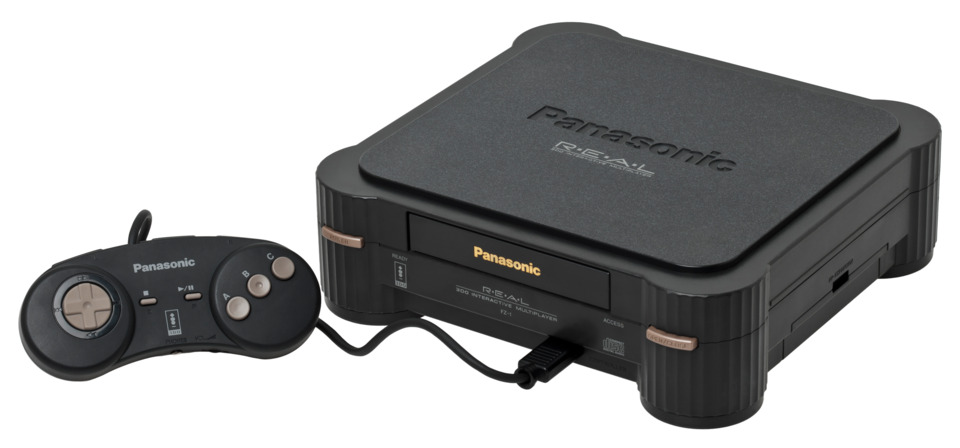
In addition to the distributed manufacturing model, 3DO would also feature the most generous software licensing fees of any existing console. Hawkins seems to have bet that by offloading manufacturing and enticing third parties, he could get a console to market with a healthy catalog in only two years. By comparison, the Playstation was in development for at least five years before its Japanese launch and may have cost as much 20x more than the 3DO to develop. There will be plenty of time going forward to examine exactly how this all went so wrong; but for now, I will state the obvious: by offloading hardware and software production to third-parties, Hawkins relinquished control over the how the system would be adopted and utilized. As a rule, third parties will do what they want when they want, regardless of what you would prefer.
The 3DO Company was only able to get one manufacturer initially onboard, Panasonic, and almost all the big titles that they were able to get lined-up for launch got delayed at practically the last minute. It should be noted that the 3DO Company did not publish any games for the 3DO until the year after launch. This resulted in the one available model of the 3DO, the Panasonic FZ-1, launching hot on October 4, 1993 with only one game, which was the pack-in title. That's a bad situation, but potentially salvageable if that one launch game is a good showcase for the system. We will get to that later. But first, some housekeeping.
What are we going to do here?
This series is going to function on a similar basis as All Saturn Games In Order with a few important differences:
- I plan to publish entries in this series every other Friday, starting today. This series isn't supposed to impact the main narratives with the PS1 and Saturn.
- I'm planning to include either 4 or 5 games per entry, which should average between the sizes of my entries for the PS1 and Saturn.
- As always, I will play the games until I get pissed off or bored, which should mean that total playtimes probably aren't going to average as high as with the PS1.
- My reviews of 3DO games will be as sketchy as the current state of 3DO emulation.
- Most importantly, there are barely any hard release dates out there for 3DO games. This means that I am forced to group the game catalog by year and play them in alphabetical order from there. An example of how unideal this will be is that AD&D: Slayer probably came out in December of 1994, but it will be the first game I cover for 1994. This will be constantly irritating; I plan on developing an eye twitch.
With those ground rules set, let's look at the 3DO's launch game.
----------------------------------------------------------------------------------------------------

Crash n' Burn
Developer: Crystal Dynamics
Publisher: Crystal Dynamics
Release Date: 10/4/1993
Time to Giving Up On Emulator Settings: 25 Minutes
Time to Crashed and Burnt: 45 Minutes
So, what is the one launch title for this ground-breaking, next gen system? It's a mediocre Combat Racing game that looks and sounds exactly one step up from Mode 7. The future is now! It's also made by the shite-mongers at Crystal Dynamics because this is the 3DO and of course they made the launch game. Oh, and it was designed by Mark Cerny for some reason, though I'm not quite able to mentally process that factoid.
Crash n' Burn features six vehicles and a few same-y tracks. There are two modes, Rally and Tournament, which I would be hard-pressed to define the difference between. The tracks themselves are fairly long, with health and weapon management becoming concerns throughout the races. The weapons are your standard arsenal of guns, missiles, and mines, all of which you start with, and which are only refilled at optional pit stops. The combat part of this game is unexciting and more of a burden than anything else, and I've had a hard time figuring out whether this game served as any kind of influence on future games, like WipEout.
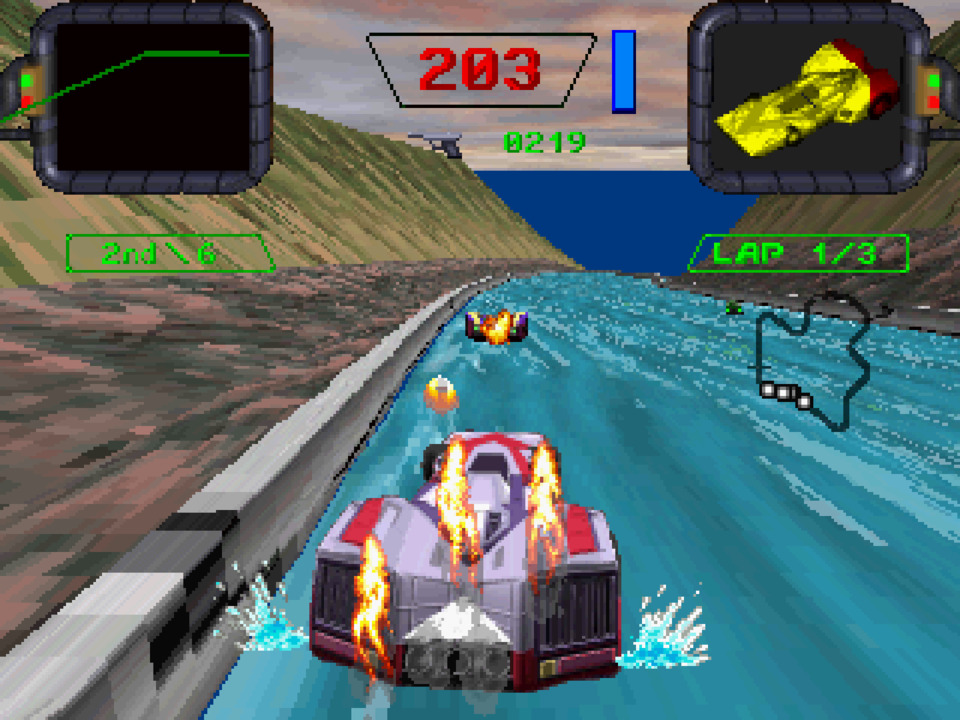
The vaguely annoying combat wouldn't be that bad if the driving model was any good. The quality of the driving physics is maybe half-a-step up from the old scaler racers. The game makes a point of having multiple driving surfaces in each track: asphalt, dirt, and water. There are differences in handling between them, but the physics are handled in broad strokes like an ice level in a Mega Man game. In addition to the six racers, each course is littered with random unranked AI cars that exist solely to be a nuisance. The overall racing experience is crap by modern standards, which I suppose is to be expected.
But this is the first NEXT GEN game. You're not going to play it for the gameplay, how does it take advantage of the CD format and 32-bit processor? Well, I can only confirm that an effort was made. This thing is highly insistent on having as many hills as possible and angled turns in the tracks, seemingly to an extent that any screenshot of the game will show off the 3D environment. There's little to no visual flair or extra bits around the tracks themselves outside of the presence of a handful of textures, though I can forgive that given the era. The music and sound design are also wildly unimpressive, though I won't ding that game too hard on that for reasons I'll get to later.
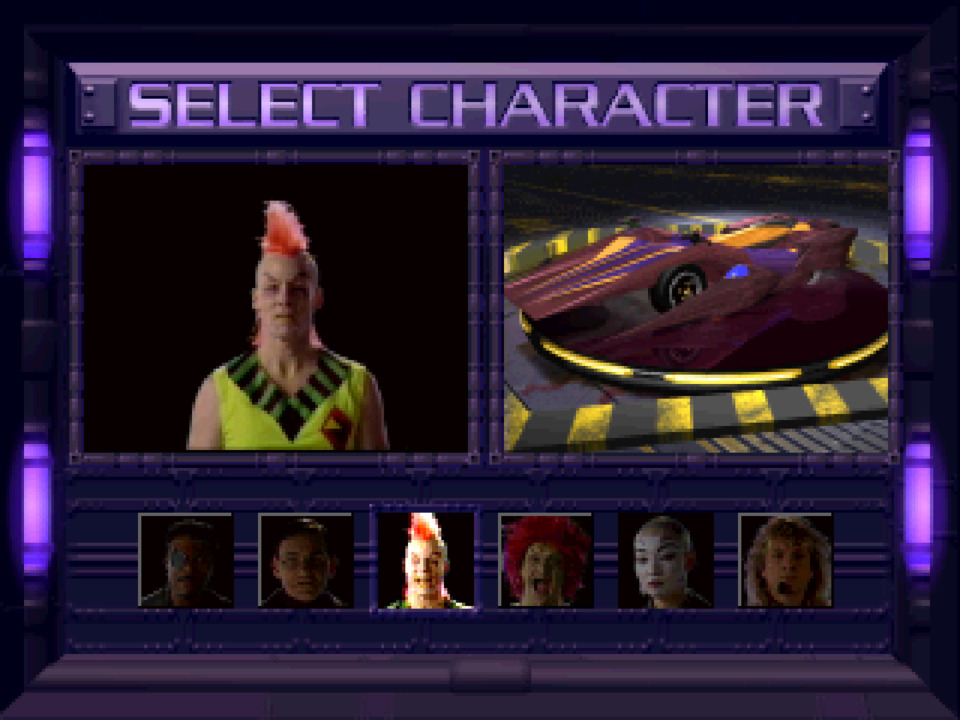
So, this is kind of a miserable package overall. Best to dismiss this thing and move on, right? Not quite. We need to be a bit more careful about judging this game, as this is the early '90's and not the mid '90's like we've been used to in the Playstation and Saturn series. Where does Crash n' Burn sit compared to the racing game landscape of 1993? By my reckoning, this game came out two years after F-Zero, one year after Super Mario Kart and Virtua Racing, is roughly contemporaneous with Ridge Racer, and a year earlier than Daytona USA. In that context, this would be the most technically impressive console racing game of its time, even though it also would have been warmed over trash compared to what was going on in arcades. But that isn't enough to make this timeless, as it would be woefully obsolete in just two years with the releases of, well, every racing game on the PS1 and Saturn (yes, even Hi-Octane is better than this). I want to come down hard on this game for being a hunk of crap, but I also want to try and be fair for some reason. I'm going to have plenty of chances to vent my frustrations at Crystal Dynamics in the future, so I'll let this one skate by for now.
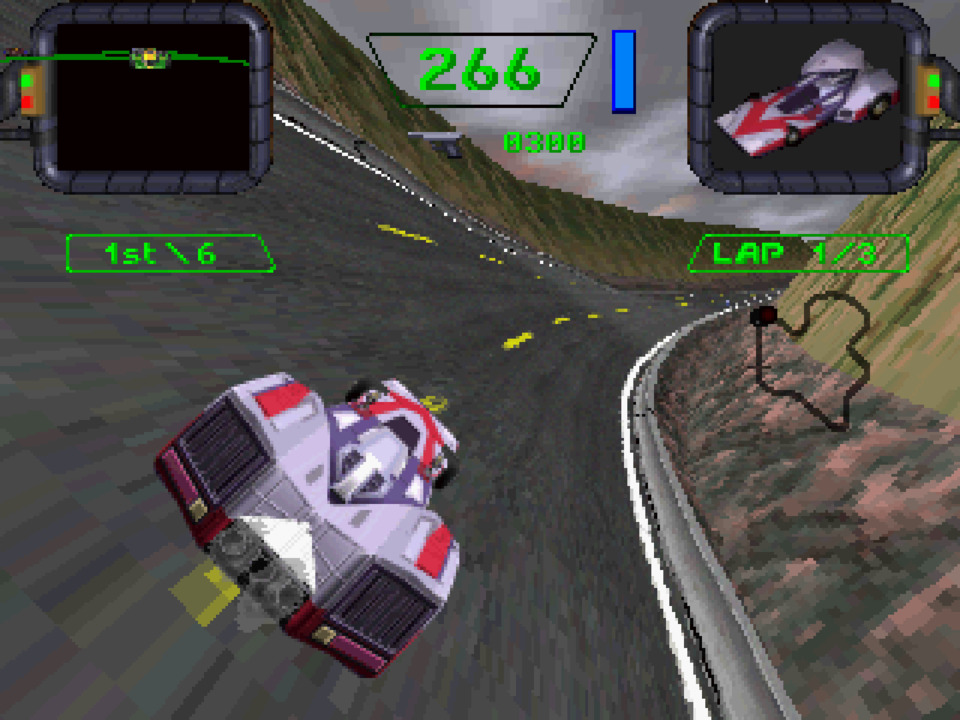
Before closing the book on this game, I do need to make a note on emulation. This was an inauspicious first game to play for the 3DO, as the emulation for it is buggy. This doesn't seem to be a problem for the vast majority of the upcoming games, but it was a problem here. I encountered consistently laggy audio effects, especially for the FMV clips, significant slow-down in the pre-rendered cutscenes, and a hard crash when racing on the second track. This is unideal, and it is the reason why I'm refraining from saying much about the audio and graphical stability in this game. According to the compatibility list that I found, this shouldn't be a problem that comes up too often, but it is bound to happen again. This is such a cursed platform.
----------------------------------------------------------------------------------------------------
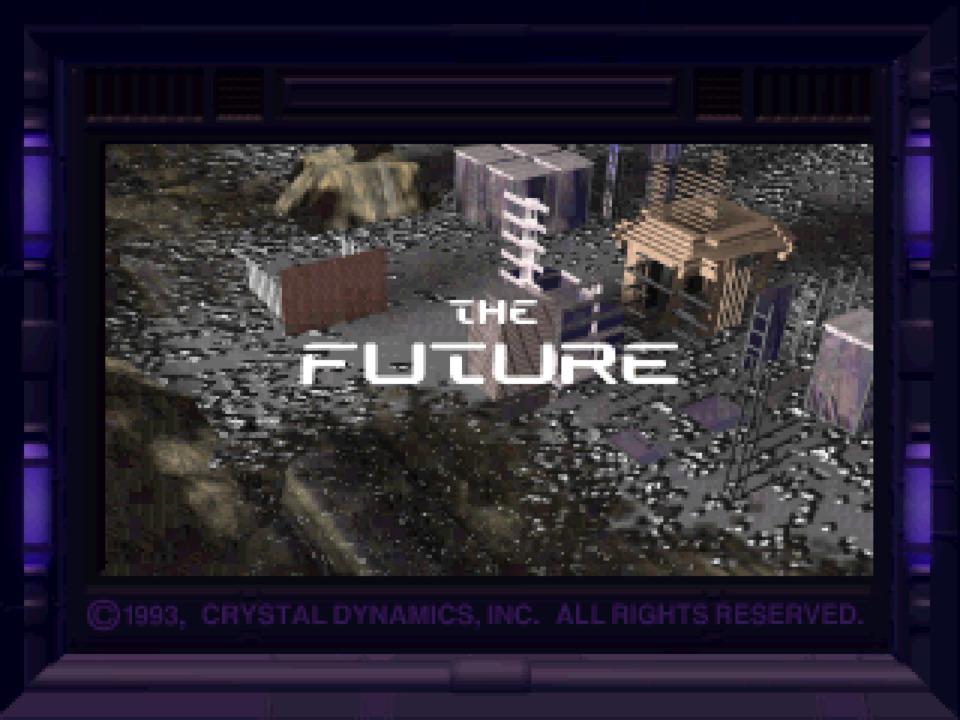
Now that we've been introduced to the task at hand, it's time to get on with the rest of the supposed 1993 releases. There are 12 of them and I don't have a chronological ordering to put them in. You couldn't pay me to cover them all in one batch, so next time we'll start going through the list in alphabetical order with: Battle Chess, Crime Patrol, Dragon's Lair, and Escape From Monster Manor.
